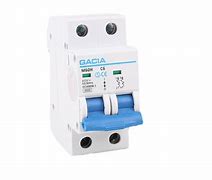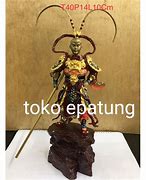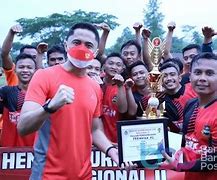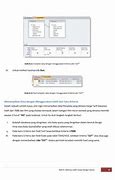
https://www.streetdirectory.com
--Pilih Tenant-- ABLE EXCHANGE & REMITTANCE ACAII TEA ADIDAS AIGNER ALAND ANGGREK BUSANA ANTA VAYA ANTARASA APTOWN HAIR FRONTIER ARABICA COFFEE ASICS ATM BANK DANAMON ATM BNI ATM BRI ATM BTN ATM CIMB NIAGA ATM HSBC ATM OCBC NISP ATM PANIN ATM PERMATA BANK AUNTIE ANNE'S BAG'S CITY BAIA NONNA BAKERZIN INDONESIA BAKMI GM BAKPAU A-SATU BALENO BANBAN BANK MANDIRI DIGITAL LOUNGE BANK SINARMAS BAR.B.Q PLAZA BASEUS BASKIN ROBBINS BASO AFUNG BEARD PAPA BEATRICE QUARTERS BEAUTY SPACE BLP BEE CHENG HIANG BEN GONG'S TEA BERMVDA COFFEE BERSHKA BIRKENSTOCK & STACCATO BLI BLI BLUU SHAAK BOOST JUICE BARS BOOTS BRIDGES EYEWEAR BURGER KING C BAKES C&F PERFUMERY CALVIN KLEIN CARAMELLO CASIO CELEBRITY FITNESS CENTURY HEALTHCARE CGV CHARLES & KEITH CHATERAISE CHATIME CHATIME ATEALIER CHICCO X RECARO CHOCOCHIPS CHRISTOPHER COIFFURE CIMB NIAGA DIGITAL LOUNGE COLD WEAR COTTON ON COTTON ON KIDS COWAY CROCS CUPBOB D'CREPES DAIRY QUEEN DE HAIR DIAMOND & CO DIMPOT DIOR COSMETICS DJI DOUBLE R HAIR STUDIO DOUGH LAB DR. BRONNER'S DRAGON HOT POT DRAGON N COW DWIDAYA TOUR DYNAMIC BAKERY EARLY LEARNING CENTRE (ELC) ENDORPHINS ERAFONE ERHA DERMATOLOGY ESTEE LAUDER EUDORA EXCELSO FAMOUS AMOS FIN'S RECIPE FIPPER FOCUS NUSANTARA FOEK LAM FOOT LOCKER FORE COFFEE
Although the Dutch were the first to attempt to plan the city, the city layout is probably more British than Dutch in character, as can be seen from such large squares as Medan Merdeka (“Freedom Field”) and Lapangan Banteng (meaning “place of the gaur [large wild ox]”). The Oriental style, or “indische” style, as the Dutch call it, is apparent not only in the city’s way of life but also in the types of houses, the wide, tree-lined streets, and the original spacious gardens and house lots. In Kebayoran, a satellite town built since World War II on the southwestern side of the city, and in other modern developments, the houses and garden lots are much smaller than in the older colonial districts.
Countries and Capitals Quiz
Jakarta has long been a city of new settlers who assimilated local ways and became Jakartans themselves. Some traditional neighbourhoods can, however, be identified. The Kota (“City”; also called Kota Tua [“Old City”] or Old Batavia) area, sometimes called the downtown section, is the historical city centre, and it houses a significant part of the Chinese population. The contemporary city’s business and financial hub lies somewhat to the south of Kota, primarily along Jenderal Sudirman and Mohammad Husni Thamrin roads, in central Jakarta. The area of Kemayoran (“Progress”) and Senen, originally on the eastern fringe of the city, is now almost central in its location and increasingly has become the city’s major retail area. The Jatinegara (“Real Country”) section, originally a Sundanese settlement but later incorporated as a separate town, then a Dutch army camp (Meester Cornelis), is now merged with the rest of Jakarta and includes many new settlers. The Menteng and Gondangdia sections were formerly fashionable residential areas near the central Medan Merdeka (then called Weltevreden). To the west, Tanah Abang (“Red Earth”) and Jati Petamburan are, like Kemayoran, densely developed. Tanjung Priok is the harbour, with its own community attached to it.
The most common type of house in the city is the kampong, or village, house; most such houses are built of materials such as wood or bamboo mats, but this does not necessarily mean that they are substandard. Another common type of housing, often used to house government workers, is the colonial urban house, or rumah gedongan; such houses are mostly single-family detached or semidetached, each standing on a separate lot. Apartment buildings constitute a more modern category; although they are more economical in the use of land than single-family types, their architectural and construction costs often make them fairly expensive. Housing is generally overcrowded.
Some of Jakarta’s buildings, such as the Portuguese Church (1695) in Kota, are of architectural or historical interest. Some of the buildings around the city square in Kota also date from colonial times, including the old city hall (1710), which has been restored and now serves as the municipal museum. The National Archives building was originally the palace of a Dutch governor-general, Abraham van Riebeeck. The Ministry of Finance building, facing Lapangan Banteng, also was designed as a governor’s palace (Herman Willem Daendels, one of Napoleon’s marshals). The Presidential Palace, north of Medan Merdeka, faces Monas, or Monumen Nasional (National Monument). The Istiqlal Mosque, in the northeast corner of Medan Merdeka opposite Lapangan Banteng, is one of the largest mosques in Southeast Asia. The National Museum (formerly the Central Museum), on the west side of Medan Merdeka, houses a collection of historical, cultural, and artistic artifacts.
After World War II Jakarta underwent a building boom. The Hotel Indonesia (the city’s first high-rise building) and the Senayan Sports Complex were built for the Asian Games in 1962. Most high-rise buildings are located in the city’s financial centre.
Melde dich an, um fortzufahren.
Offenbar hast du diese Funktion zu schnell genutzt. Du wurdest vorübergehend von der Nutzung dieser Funktion blockiert.























